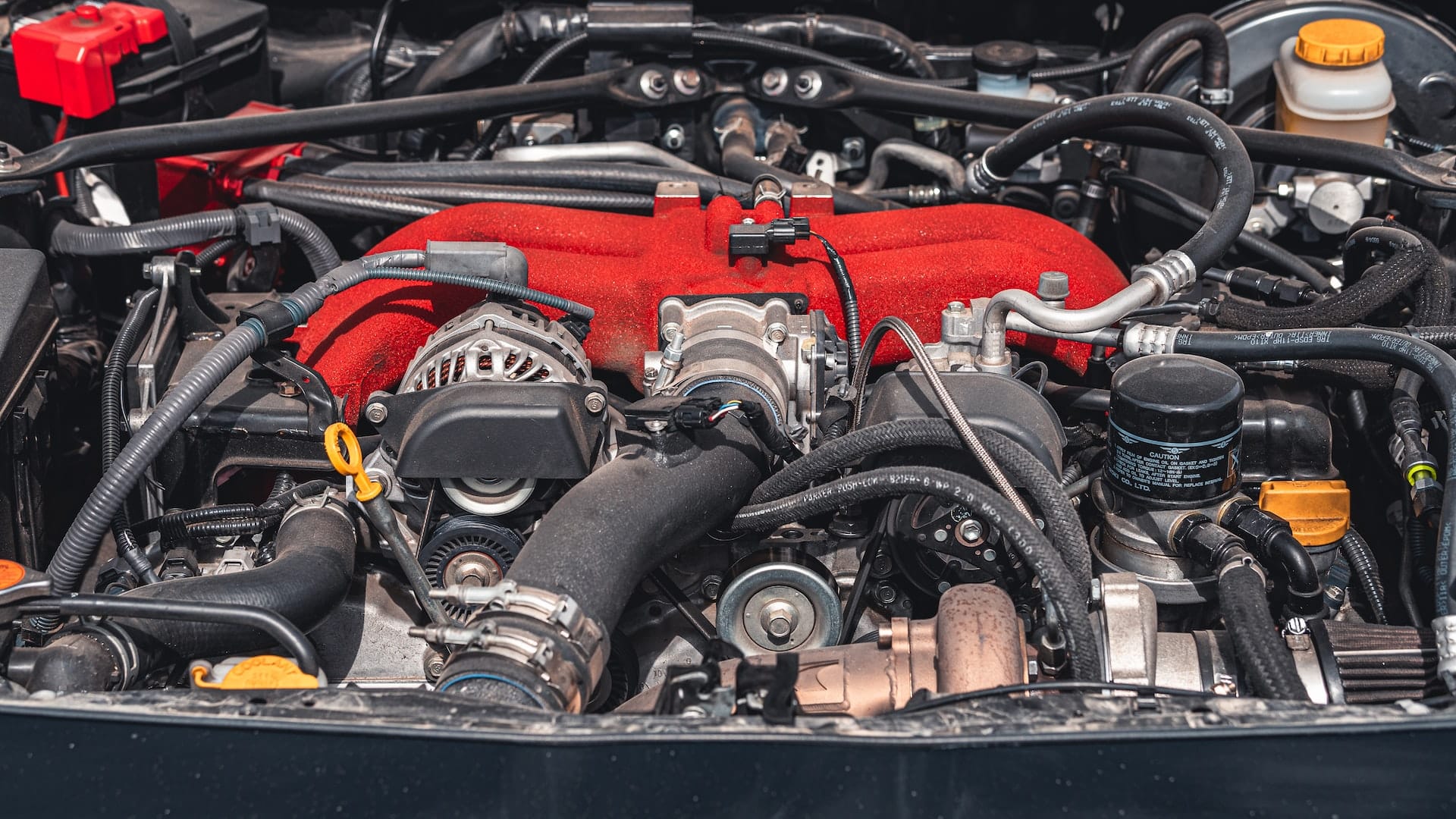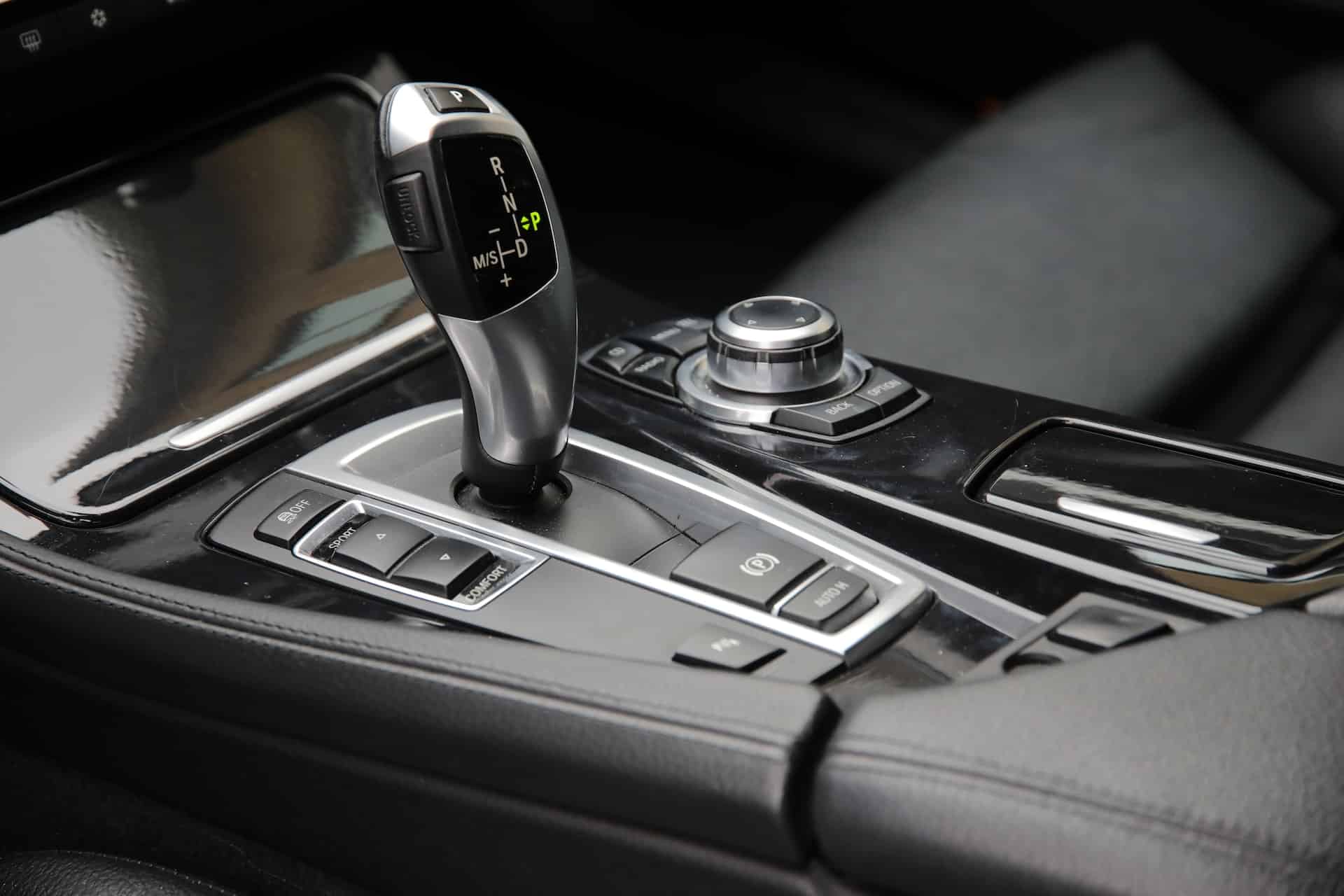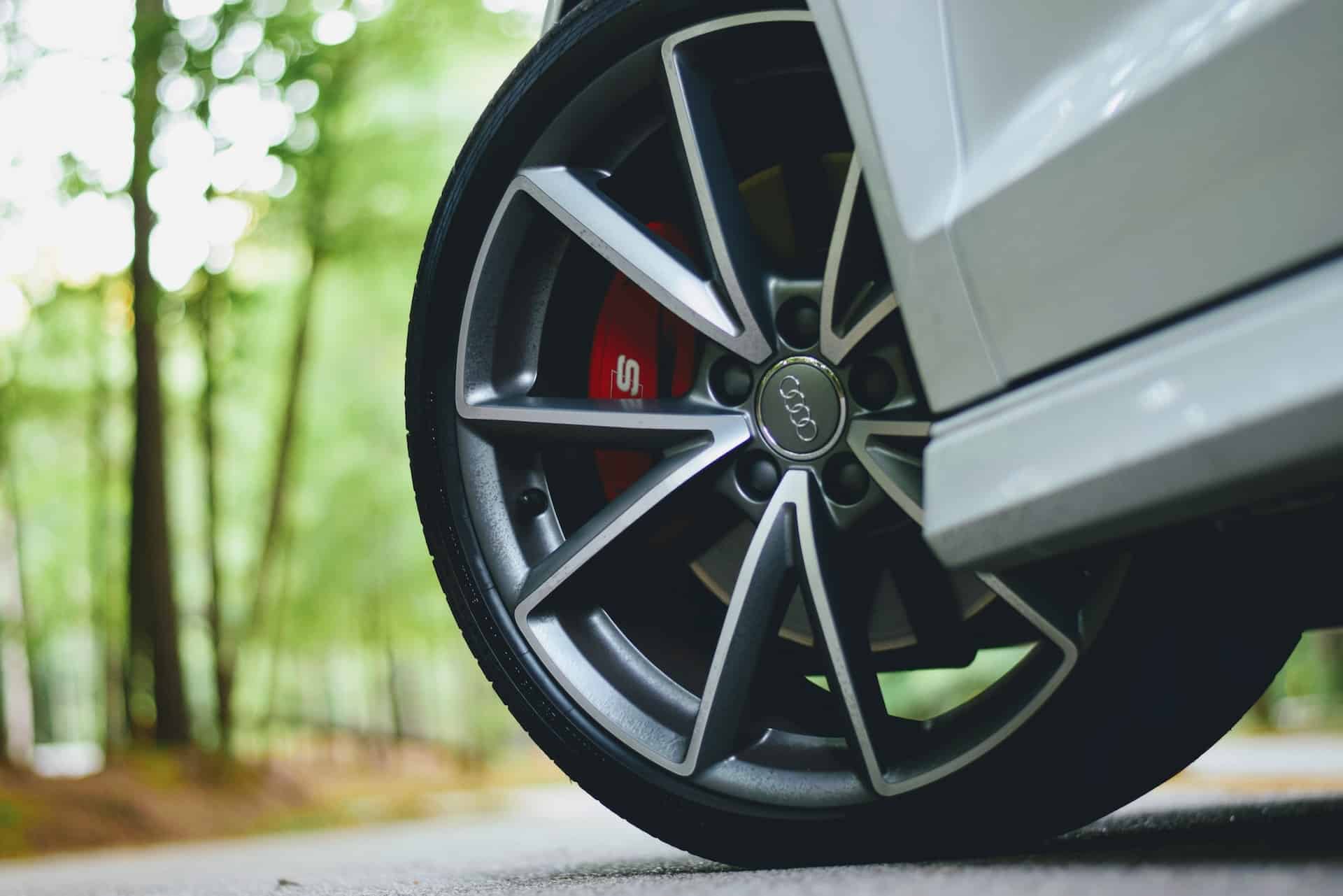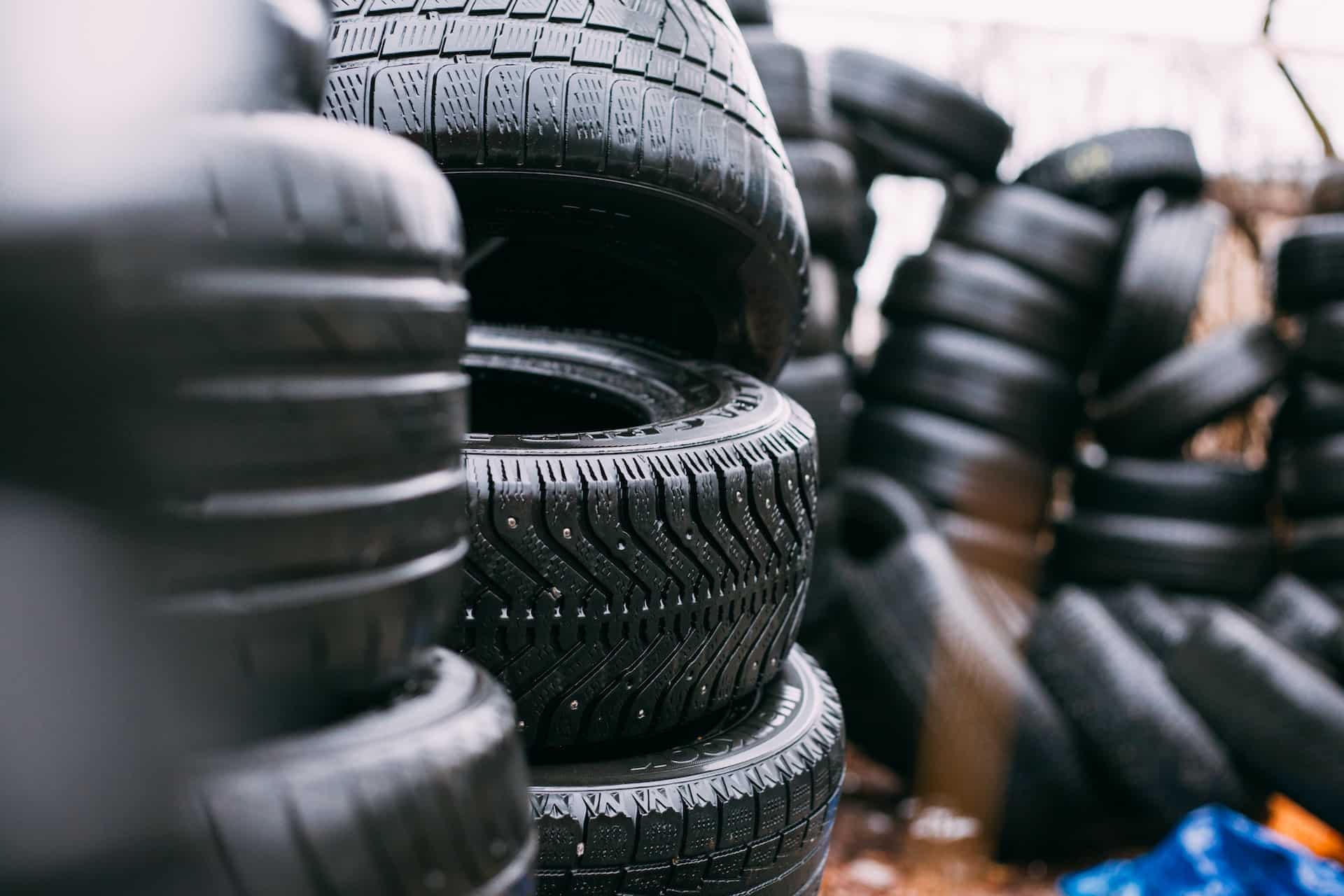An often cited reason for electric vehicle (EV) ownership has to do with EV maintenance, as many people believe electric cars to be completely maintenance-free. While this would be awesome, it is in fact not the case. An EV certainly needs less maintaining than an internal combustion engine (ICE) vehicle. But how do the two types of vehicles compare when it comes to keeping them in good condition? This article will examine EV maintenance and how it compares to that for ICE gas-powered cars.
In this article, we look at various maintenance categories and compare the frequency of repair or maintenance in each one. We also answer the common question: What type of maintenance does an electric car need? Your specific vehicle and circumstances may vary from what we discuss here. Also, keep in mind that this article covers routine maintenance, not large expensive repairs like engine replacement or battery pack failure.
— ENGINE MAINTENANCE —

ICE Car Maintenance: Engine
One of the biggest components of an ICE vehicle is the engine. In an ICE vehicle, there are about 2,000 moving parts, most of which will require maintenance at some point. Spark plugs, pistons, timing belts, alternators, and more either move or need maintenance at specific mileage intervals. It is important to note that this article does not deal with engine replacement. Not only is such a thing rare, but replacing an engine is considered a massive repair.
The most common and frequent type of engine maintenance comes in the form of oil changes. This typically needs to be done every 5,000 to 10,000 miles. An oil change is relatively cheap, costing around $30 each time you visit the mechanic. If done every 10,000 miles, you pay around $300 over the course of a 100,000 mile vehicle. Double that if you change oil every 5,000 miles.
EV Maintenance: Engine
When it comes to engine maintenance for an EV, things are much simpler. This is because, as you might already know, an EV does not have an engine. Instead, depending on the type of EV you get, there are anywhere from 1 (older Tesla Model S, Chevy Bolt) to 4 (Rivian R1T) electric motors. The Tesla Model Y (the best selling EV in the US) has 2 electric motors, each of which only has about 20 moving parts. Not only does the Model Y have less moving parts in its motor (often called a “drive unit”), but it also does not require any sort of fluid changes.
Focusing specifically on the “engine”, EV maintenance seems to be cheaper than ICE car maintenance. No oil changes every 5,000-10,000, and also no spark plugs to worry about. Additional things like a timing belt, radiator coolant, and a starter are not considerations for an EV. While electric motors do need to be replaced every so often, it is unclear exactly when and after how many miles this will happen. Anecdotes exist showing people going 60,000 miles on a motor. However there are also stories of people going over 250,000 (or more) miles on a single motor.
— TRANSMISSION MAINTENANCE —

ICE Car Maintenance: Transmission
Another big component of an ICE vehicle is the transmission. Transmissions come in various types and with differing amounts of gears. While they do not require maintenance as frequently as the oil does, they still need fluid changes. Toyota recommends this roughly every 60,000 miles. While not everyone needs to do this, it is still a relatively common type of maintenance on a gas-powered vehicle. This type of maintenance costs about $100, and any mechanic should be able to do this.
EV Maintenance: Transmission
Just like the case for engines, EVs don’t have a traditional transmission. Instead the “gears” are found in the electric motors. The motors make the car go forward or backward by simply rotating the way the driver has indicated. Then during driving, there is only one “gear” that the vehicle operates within. When you push down the accelerator pedal the car simply moves until it reaches its top speed, no shifting required. Once again, this means that EV maintenance will be cheaper than ICE vehicle maintenance when it comes to transmission.
[cta_blog_section title=’Looking to buy a used EV? ‘ cta_url=’https://www.evuniverse.com/best-selling-electric-cars’ cta_button=’Search Listings’]
— FUEL FILTER MAINTENANCE —

ICE Car Maintenance: Fuel Filter
ICE vehicles use either gasoline or diesel fuel to propel themselves forward. Sometimes the fuel can get water or contaminants in it, which is why there is a filter. The cleaner the fuel is when it is burned, the better performance will be. But this part needs to be changed out every 2 years, or 30,000 miles, whichever comes first. If you drive frequently on dusty roads, you may need the filter changed more frequently. A fuel filter will cost about $170 dollars on the low end.
EV Maintenance: Fuel Filter
An electric vehicle does not have a fuel tank full of gasoline. Instead, for many cars, there is a battery pack in the floor between the wheels. The EV’s fuel, as you can probably guess, is electricity. Unlike a fuel tank, which requires a filter, there is no such part in an EV. This means there is no maintenance to perform and nothing for the driver to keep track of.
— BRAKE MAINTENANCE —

ICE Car Maintenance: Brakes
Every time you come to a stop in a gas-powered vehicle, the brake pedal gets pushed in. This, in turn, squeezes the brake pads around the rotors causing the vehicle to stop. This action is one that is repeated many times while driving an ICE vehicle. This also, over time, wears down the brake pads in a car.
Because of this, it is generally recommended to get the brake pads inspected every two years with replacement between 30,000 and 75,000 miles. Some mechanics charge more or less than others. Many factors go into the cost of changing brake pads, but it generally costs a couple hundred dollars. Brake lines also need fluid changes every two years.
EV Maintenance: Brakes
Brake maintenance for an EV is much less involved than an ICE vehicle. EVs have what’s called “regenerative braking.” Basically what this means is that instead of using the friction brakes, with the brake pedal, the electric motor simply spins the other direction. This slows down the car without using the brake pads. It also puts a little bit of energy back into the battery pack, extending range.
Electric vehicles still have friction brakes, they just use them less frequently. In the long run, if cared for, these last many more miles than brakes in a typical gas powered vehicle. This doesn’t mean they are perfect though. Because EVs use friction brakes less frequently, they are more prone to corrosion. Using the friction brakes every so often is a good plan to keep the brakes in working order. If well cared for, it is not uncommon for EV owners (at least with Teslas where the most data is available) to drive over 150,000 miles on their original brake pads. Note that most EV manufacturers recommend either a brake fluid change or check every two years.
[cta_blog_section title=’Find EV floor mats, chargers, cables and more. ‘ cta_url=’https://www.evuniverse.com/best-selling-electric-cars’ cta_button=’Shop Parts ‘]
— TIRE MAINTENANCE —

ICE Car Maintenance: Tires
By now you may be thinking that this is a pretty one sided article. That’s because, while EVs are not maintenance free, there is less of it required. But what about tires – how often do they need to be replaced in an ICE vehicle? Many tire manufacturers have warranties that extend up to 50,000 miles (some go even higher). As with anything, how long your tires last in an ICE vehicle depends on how you drive, how often you rotate the tires and other factors. Generally speaking the tires last between 25,000 miles for summer performance tires and 85,000 miles for all season.
EV Maintenance: Tires
For EVs, tires are one area where maintenance requirements exceed ICE vehicles. EV owners may have to replace them at a maximum of 40,000 miles. Again, your results will vary. There are two main reasons for shorter tire life on EVs. First, EVs usually have a large, heavy battery pack. This pack adds a lot of weight to the car, which increases the tire wear for EVs. Secondly, EVs are typically fast and fun to drive. When you have a heavy car and drive it fast, tire wear will increase. So in this case, EV maintenance for tires is more involved and costly than for ICE cars.
Maintenance Cost: EVs vs ICE Cars
While EVs are not maintenance free, your EV maintenance needs and costs are likely to be a lot less than an ICE car. Generally speaking, you will spend less money on maintenance issues with an electric car and less time visiting the mechanic as well. Outside of tires, routine maintenance is less for an EV than it is for a gas-powered vehicle. Keep this in mind as you think about electric vs ICE for your next car purchase!

